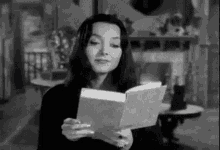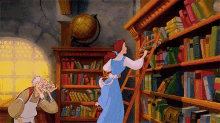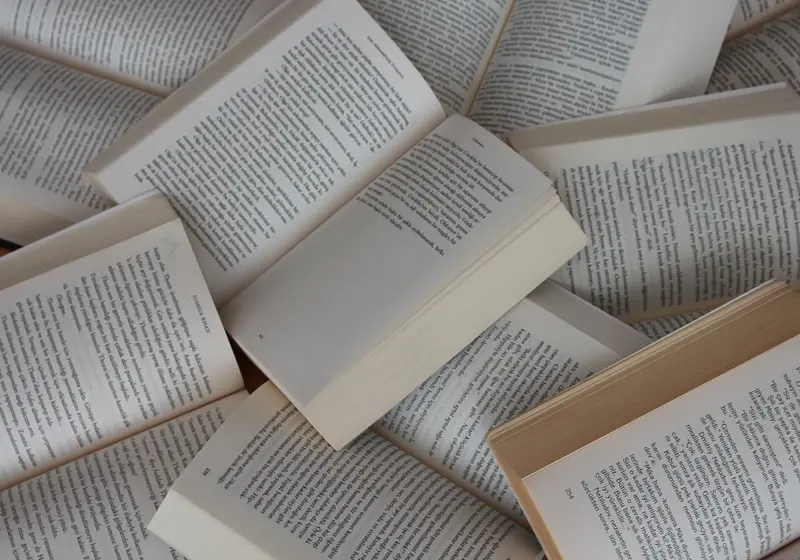One thing you should know about me is that I love reading. Anything; thrillers, horror, romance, coming-of-age, classics. Oh, and another thing… I love being organised!
Planners, spreadsheets and lists, I like staying on top of my schedule. So it will come as no surprise that I want my reading to be just as regimented as the rest of my life. For years, Goodreads (an Amazon-owned app) has been at the forefront of the book community, as the ultimate reading log. But, the rise of Booktok has sparked discussion around many more reading apps, bringing a new up-and-coming contender to light: The Storygraph. The Storygraph is a Black, female-owned independent business that seeks to steer away from traditional social media and create a user-friendly app for book lovers without the pressures of likes and follower counts. But does that make it better than Goodreads? Well, this year, I decided to track my reading using both platforms, to decide the superior reading app for all the book lovers out there!
Aesthetics:
Let’s begin with aesthetics! In terms of design, for me, there is a standout winner. The Storygraph’s homepage looks sleek and organised.
Its simple yet charming logo of a shelf of books perfectly encapsulates the minimalistic aesthetic the app strives to achieve. By comparison, Goodreads' layout hasn’t changed much since its launch in 2006 and is in need of some updating. The homepage looks clunky and cluttered in comparison to The Storygraph’s chic presentation. The beige and brown colour scheme is easy on the eyes but not nearly as attractive as the monochrome palette of its competitor’s app. The constant stream of adverts also makes this a much less visually appealing platform.
Organisation:
On to the organisation features! One of Goodreads' best attributes is that it allows readers to create lists. These can then be used to rank users’ books, create genre-specific lists or centre around any other category readers want to track.
I use lists to organise my books by theme (e.g. Christmas reads) or by country to try to increase the amount of translated fiction I read. Unfortunately, The Storygraph doesn’t have this feature, making it much more challenging to group sets of related books together.
(A Goodreads list)
Where The Storygraph edges ahead is in organisation due to its built-in categories, making it easy to organise and catalogue previous reads. For instance, The Storygraph will automatically group together all books labelled “sad” or “character driven”. So you can easily access those books, but cannot create your own categories.
Conversely, Goodreads requires users to manually create their own genres and themes to organise their books. This allows readers to create personalised tags, to track things important to them, but it is much more time-consuming.
(My books, catalogued on Goodreads)
Have you ever read a book and loved the style of writing or the pacing? Well, you can record all these in depth characteristics in The Storygraph. The Storygraph will track your bookish preferences in terms of pacing, the focus on plot and your most commonly read genres.
This makes it incredibly easy to understand which books you enjoy and why you enjoy them. Readers can also track the percentage of the book they have completed, by updating the page number they have reached. The app uses these stats to form personalised graphs to represent each user's reading habits. These are a few of my own graphs from my reads this year.

This is without a doubt the app’s most notable feature and is a major selling point for The Storygraph. This unique visual representation of reading patterns through charts and graphs is what originally caught my eye and persuaded me to sign up. Goodreads has no counterpart in this sector, so anyone analytical or statistically minded will appreciate The Storygraph’s illustrations.
(The books I read organised by pacing on The Storygraph)
Reviews and Community:
Goodreads is by far the largest online community of readers, with over 120 million registered members. Goodreads' huge following enables many groups and specialised book clubs to engage in thoughtful discussions with like-minded individuals. Most users enjoy, and take advantage of, this aspect of Goodreads as they can communicate with those across the globe on bookish topics that interest them. Some of the most popular book clubs include Horror Aficionados, The Rory Gilmore Book Club and Reese’s Book Club (a book club hosted by actress Reese Witherspoon).
(Inside a Goodreads book club)
Goodreads members can also connect with others through reviews and lists others create. This can serve as both a strength and a weakness to the app. Though most discussion is respectful and insightful, like all social media, hate comments can be posted (with minimal regulation) and unhealthy competition surrounding follower count and status can easily breed between members.
The Storygraph is a much smaller network of readers with only one million users, making the whole experience seem more private.
The Storygraph offers an accurate and detailed rating system where users can rate books by half and quarter stars and we all know every quarter star counts. This is in comparison to Goodreads' full star rating system (something I’ve personally found annoyingly imprecise as you have to constantly round books up or down).
(My ratings stats in The Storygraph)
Users can review all books and add content warnings to sensitive material, allowing viewers to check for any triggering content before reading. Users also have the option to mark books DNF (did not finish) and give reasoning. Another valuable feature of The Storygraph is the ability to create private notes while reading, to help aid a later review or keep reviews private to the reader.
The only downside to The Storygraph’s reviewing system is the lack of interaction available. While Goodreads allows readers to comment on and like reviews, The Storygraph limits user contact. Though this might change in the future, for right now, The Storygraph doesn’t want to be a social website. This can be a major drawback for readers that want to connect with others or build a brand for themselves within the reading community.
Other Features:
The Storygraph’s recommendations are generated based on the user’s previously liked books and genres. Often the books the app suggests are by independent booksellers and lesser known books, under the radar of other mainstream reading communities.
Goodreads recommends books based on popularity, making books by authors such as Colleen Hoover and Taylor Jenkins Reid popular suggestions. Great if you are a YA romance lover or just getting into reading, but any alternative readers or members of other book-related communities that are already aware of current favourites, will find most of these recommendations unhelpful and impersonal.
Another draw to The Storygraph, is the reading challenges users can participate in. These challenges are often themed around particular themes or styles. One such challenge that I joined, is the ‘Disney Animation Challenge’, where readers are encouraged to read a book for every animated Disney film, with prompts corresponding to each movie (e.g. a book set in the 1920s for Princess and the Frog).
These challenges can be fun and motivating ways to achieve New Year’s resolutions; to read more or to read outside your comfort zone. Goodreads has a similar “challenge”, but it is solely based on the number of books members read. The Storygraph has a larger focus on reading diversely and at the reader’s own pace.
(My Storygraph reads by mood)
Overall, both reading trackers have their merits. I found The Storygraph to be the more accommodating and useful platform, but I would be lying if I said I didn’t miss the social aspect that Goodreads provides. Hearing different interpretations of the book I’d just finished or following along with a book club’s monthly pick, were some of the app’s best features.
Though, I think The Storygraph’s charts and diagrams are cool enough alone to encourage someone to download the app. I love seeing all my reading data translated into images and graphs. If you are someone who is trying to cut down on social media, I think The Storygraph would be a great way to monitor your reading without the stresses of other internet communities. And, if you do decide to make the switch to The Storygraph, you can easily import all your data from Goodreads. Ultimately, though, there’s no harm in having both and enjoying all the features if you simply can’t choose between them, any encouragement to read more is a win in my book!
My accounts!:
https://www.goodreads.com/olivia60
https://app.thestorygraph.com/profile/olivia60
(All the books I’ve read in recent years, imported to The Storygraph)













